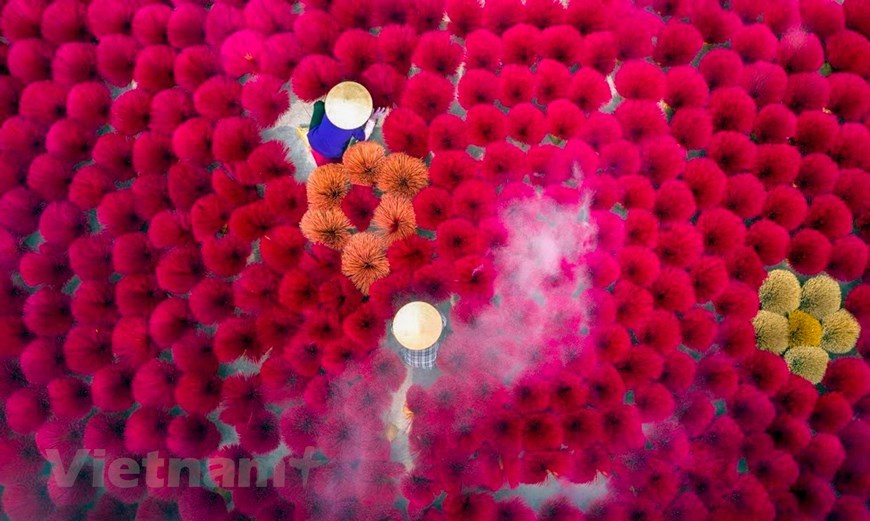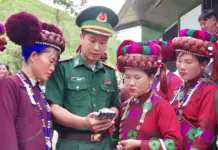-

Incense-making units in Quang Phu Cau resume their operation after nearly two months of business disruption due to social distancing. (Photo: VNA)
-

According to local elders, the craft of making incense began in Quang Phu Cau around 100 years ago. It was first practiced in Phu Luong Thuong hamlet, before being expanded to the remaining hamlets in the commune, including Xa Cau, Quang Nguyem, Phu Luong Ha, Cau Bau and Dao Tu. (Photo: VNA)
-

Everywhere in Cau Bau, Phu Luong Thuong, and Dao Tu hamlets in the village, the streets have blazed pink and red of incense sticks. (Photo: VNA)
-

Quang Phu Cau’s incense sticks are not only favoured by domestic customers but they are also exported to many foreign markets around the world. (Photo: VNA)
-

The making of incense sticks include many steps, including chopping bamboo, dipping the sticks in pink dye, letting them dry outdoor, and producing incense paste. (Photo: VNA)
-

As incense sticks are made from bamboo, Quang Phu Cau villagers consume around 200 tonnes of bamboo a day, which are mostly transported from Bac Kan, Lang Son, Thai Nguyen and Thanh Hoa provinces. (Photo: VNA)
-

Beginning as a part-time job, the craft now generates incomes to nearly 3,000 households, accounting for around 70% of the total households in the village. (Photo: VNA)
-

After two months of hiatus due to social distancing, workers now return to their work. (Photo: VNA)
Incense-making Quang Phu Cau village
Quang Phu Cau village in Ung Hoa district, 35 kilometres from downtown of Hanoi, is famous for its century-old craft of making incense. Everywhere in Cau Bau, Phu Luong Thuong, and Dao Tu hamlets in the village, the streets have blazed pink and red of incense sticks.



